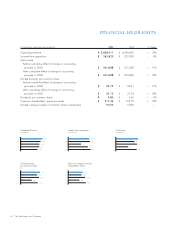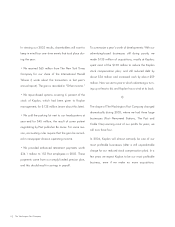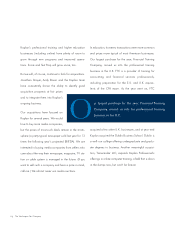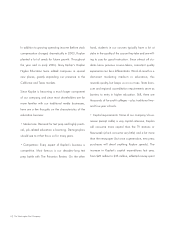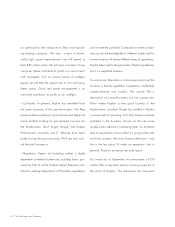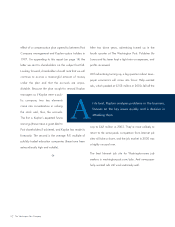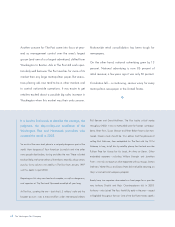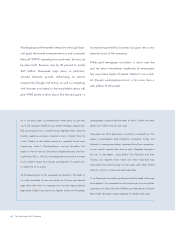Washington Post 2003 Annual Report Download - page 5
Download and view the complete annual report
Please find page 5 of the 2003 Washington Post annual report below. You can navigate through the pages in the report by either clicking on the pages listed below, or by using the keyword search tool below to find specific information within the annual report.
In viewing our 2003 results, shareholders will want to
keep in mind four one-time events that took place dur-
ing the year:
•We received $65 million from The New York Times
Company for our share of the International Herald
Tribune (I wrote about this transaction in last year’s
annual report). The gain is recorded in “Other income.”
•We repurchased options covering 6 percent of the
stock of Kaplan, which had been given to Kaplan
management, for $138 million (more about this later).
•We sold the parking lot next to our headquarters at
year-end for $45 million, the result of some patient
negotiating by Post publisher Bo Jones. For some rea-
son, accounting rules require that the gain be record-
ed in newspaper division operating income.
•We provided enhanced retirement payments worth
$34.1 million to 153 Post employees in 2003. These
payments came from our amply funded pension plan,
and this should result in savings in payroll.
To summarize a year’s worth of developments: With our
advertising-based businesses still doing poorly, we
made $135 million of acquisitions, mostly at Kaplan;
spent most of the $138 million to reduce the Kaplan
stock compensation plan; and still reduced debt by
about $34 million and increased cash by about $59
million. Now we start a year in which advertising is turn-
ing up at least a bit, and Kaplan has a wind at its back.
✧
The shape of The Washington Post Company changed
dramatically during 2003; where we had three large
businesses (Post–Newsweek Stations, The Post and
Cable One) earning most of our profits for years, we
will now have four.
In 2004, Kaplan will almost certainly be one of our
most profitable businesses (after a still unpredictable
charge for our reduced stock compensation plan). In a
few years we expect Kaplan to be our most profitable
business, even if we make no more acquisitions.
03 The Washington Post Company



